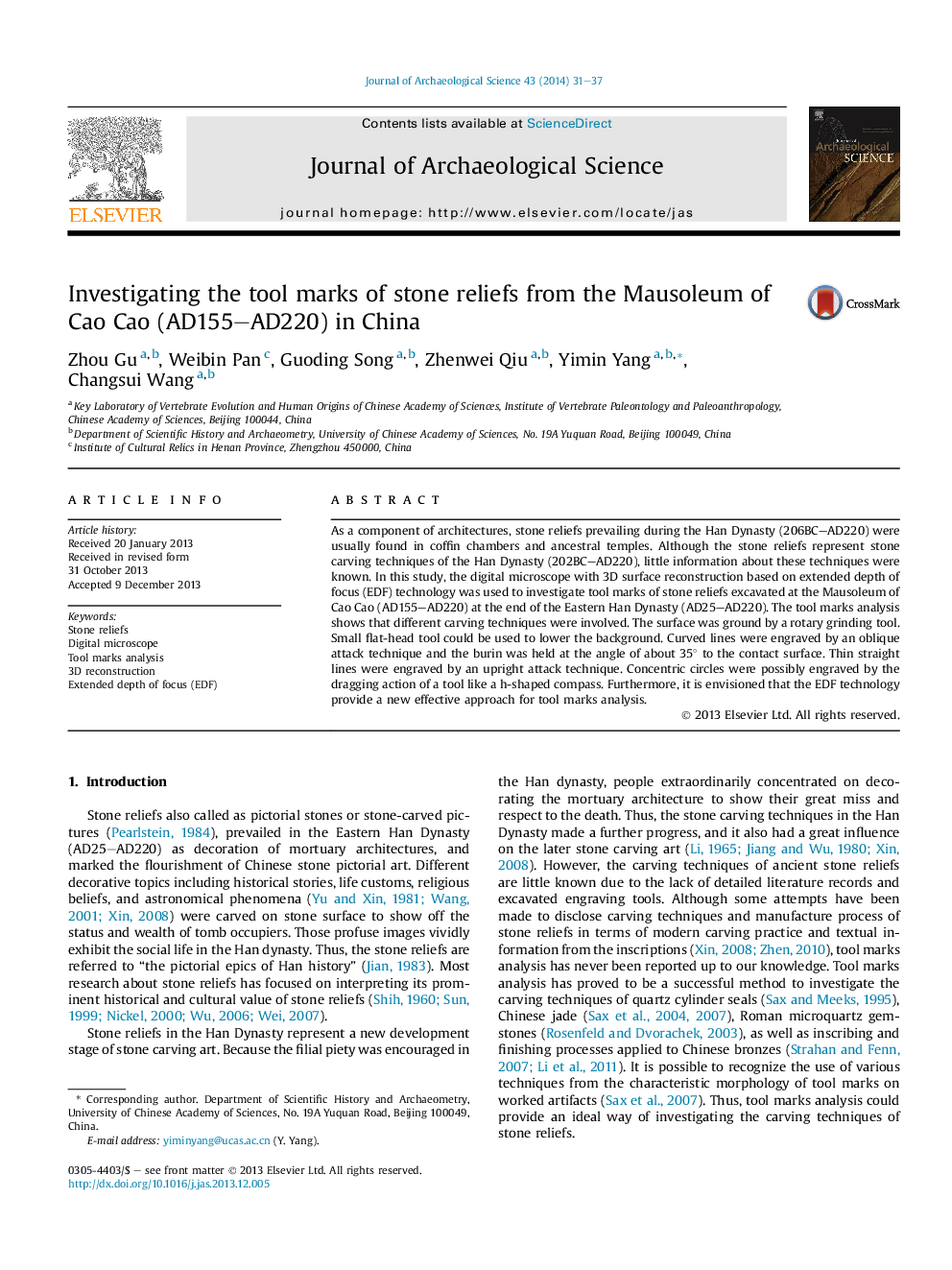| Article ID | Journal | Published Year | Pages | File Type |
|---|---|---|---|---|
| 7443572 | Journal of Archaeological Science | 2014 | 7 Pages |
Abstract
As a component of architectures, stone reliefs prevailing during the Han Dynasty (206BC-AD220) were usually found in coffin chambers and ancestral temples. Although the stone reliefs represent stone carving techniques of the Han Dynasty (202BC-AD220), little information about these techniques were known. In this study, the digital microscope with 3D surface reconstruction based on extended depth of focus (EDF) technology was used to investigate tool marks of stone reliefs excavated at the Mausoleum of Cao Cao (AD155-AD220) at the end of the Eastern Han Dynasty (AD25-AD220). The tool marks analysis shows that different carving techniques were involved. The surface was ground by a rotary grinding tool. Small flat-head tool could be used to lower the background. Curved lines were engraved by an oblique attack technique and the burin was held at the angle of about 35° to the contact surface. Thin straight lines were engraved by an upright attack technique. Concentric circles were possibly engraved by the dragging action of a tool like a h-shaped compass. Furthermore, it is envisioned that the EDF technology provide a new effective approach for tool marks analysis.
Keywords
Related Topics
Physical Sciences and Engineering
Materials Science
Materials Science (General)
Authors
Zhou Gu, Weibin Pan, Guoding Song, Zhenwei Qiu, Yimin Yang, Changsui Wang,
